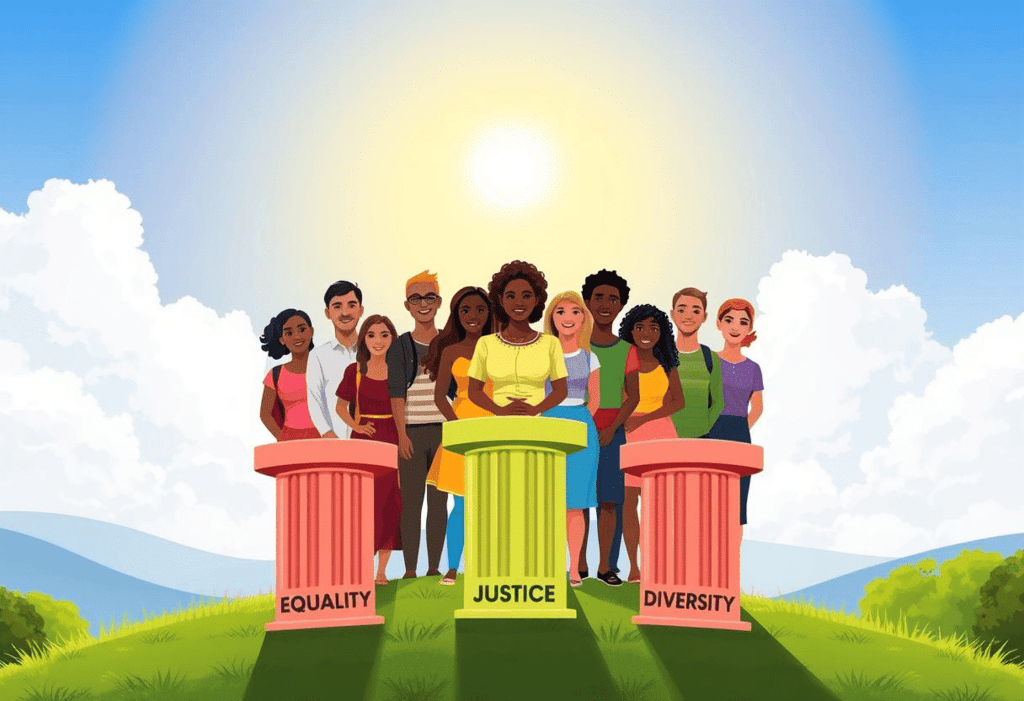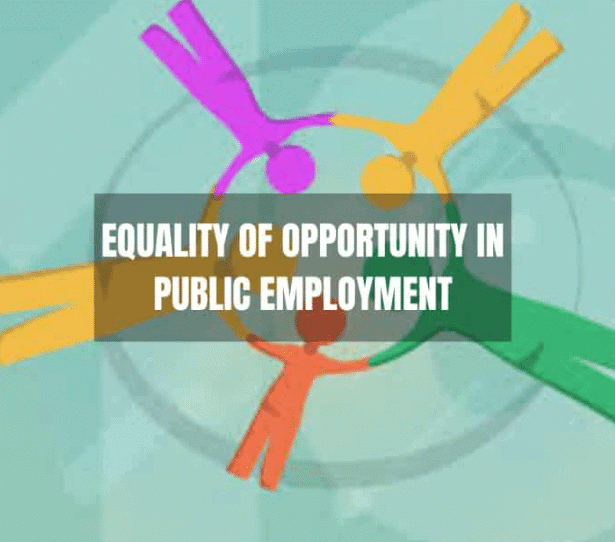Protective Discrimination and Social Justice: Article 15 and 16 | Constitutional Law - CLAT PG PDF Download
Introduction to Protective Discrimination and Social Justice
Protective Discrimination, also known as positive discrimination or affirmative action, refers to policies that give preferential treatment to historically disadvantaged groups to correct past injustices and promote equality. In India, this includes reservations and special provisions for Scheduled Castes (SCs), Scheduled Tribes (STs), Other Backward Classes (OBCs), women, children, and economically weaker sections (EWS).
What is Social Justice?
Social Justice aims to create an egalitarian society by reducing inequalities based on caste, class, gender, or economic status. It ensures that marginalized groups have equal opportunities, dignity, and access to resources. The Indian Constitution embeds social justice in its Preamble, Fundamental Rights, and Directive Principles, with Articles 15 and 16 playing a key role.
Key Point: Protective discrimination is a tool to achieve social justice by balancing formal equality (treating everyone the same) with substantive equality (addressing historical disadvantages).
Example: Providing 27% reservation for OBCs in government jobs is protective discrimination to ensure social justice for backward communities.
Article 15: Prohibition of Discrimination
 Article 15 of the Indian Constitution prohibits discrimination and allows special provisions for disadvantaged groups to promote equality. Here’s a detailed breakdown of its clauses:
Article 15 of the Indian Constitution prohibits discrimination and allows special provisions for disadvantaged groups to promote equality. Here’s a detailed breakdown of its clauses:
Text and Scope of Article 15
- Article 15(1): The State shall not discriminate against any citizen on grounds only of religion, race, caste, sex, place of birth, or any of them.
- Article 15(2): No citizen shall, on the above grounds, face restrictions in accessing public places (e.g., shops, restaurants, wells, roads).
- Article 15(3): The State can make special provisions for women and children.
- Article478(4): The State can make special provisions for the advancement of socially and educationally backward classes, SCs, and STs (added by the 1st Amendment, 1951).
- Article 15(5): The State can provide reservations for backward classes in educational institutions (government or aided), except minority institutions (added by the 93rd Amendment, 2005).
- Article 15(6): The State can make provisions for economically weaker sections (EWS) in education, excluding minority institutions (added by the 103rd Amendment, 2019).
Scope:
- Article 15 applies to State actions (laws, policies) and certain private actions (public access under Article 15(2)).
- It prohibits discrimination based on specific grounds but allows affirmative action to uplift disadvantaged groups.
- Special provisions must be reasonable and align with the equality principle under Article 14.
Key Point: Article 15 balances the prohibition of discrimination with the need for affirmative action to achieve social justice.
Example: A state law reserving 50% of medical college seats for SCs/STs is valid under Article 15(4), even though it differentiates based on caste, as it aims to uplift backward classes.
Key Concepts under Article 15
Discrimination
Discrimination means treating people differently based on prohibited grounds (religion, race, caste, sex, place of birth) without a valid reason. Article 15(1) ensures that the State does not enact discriminatory laws or policies.
Example: A law denying women entry to a public park would violate Article 15(1).
Special Provisions
Special provisions are exceptions to the non-discrimination rule, allowing affirmative action for:
- Women and Children (Article 15(3)): E.g., maternity benefits, child welfare laws.
- Backward Classes, SCs, STs (Article 15(4)): E.g., reservations in education.
- Educational Institutions (Article 15(5)): E.g., OBC quotas in colleges.
- EWS (Article 15(6)): E.g., 10% quota in educational institutions.
Example: The Right to Education Act reserves 25% of seats in private schools for disadvantaged children, valid under Article 15(4).
Reasonable Classification
Special provisions must comply with Article 14’s equality principle, requiring:
- Intelligible Differentia: A clear basis for classifying a group (e.g., social backwardness).
- Rational Nexus: The classification must serve a legitimate purpose (e.g., uplifting backward classes).
Key Point: Reservations under Article 15 must be justified as reasonable and not arbitrary.
Landmark Case Laws on Article 15
1. State of Madras v. Champakam Dorairajan (1951)
- Facts: A state policy reserved seats in medical and engineering colleges based solely on caste.
- Issue: Did the policy violate Article 15(1)?
- Held: The policy was unconstitutional as it discriminated based only on caste, violating Article 15(1). This led to the 1st Constitutional Amendment, adding Article 15(4) to allow reservations for backward classes.
CLAT PG Tip: This case is crucial for understanding the origin of Article 15(4).
2. Indra Sawhney v. Union of India (1992) (Mandal Case)
- Facts: The government introduced 27% OBC reservation in central government jobs.
- Issues: Was the reservation valid under Article 15(4)? Should economic criteria be used for reservations?
- Held:
- Upheld reservations for socially and educationally backward classes under Article 15(4).
- Introduced the “creamy layer” concept, excluding affluent OBCs from reservation benefits.
- Rejected economic criteria as the sole basis for backwardness.
3. Ashoka Kumar Thakur v. Union of India (2008)
- Facts: The 93rd Amendment introduced Article 15(5) for OBC reservations in higher education.
- Issue: Was Article 15(5) constitutionally valid?
- Held:
- Upheld Article 15(5) and 27% OBC reservation in central educational institutions.
- Emphasized creamy layer exclusion and the need for data on backwardness.
- Clarified that reservations apply to government and aided institutions, not unaided private ones.
4. Janhit Abhiyan v. Union of India (2022)
- Facts: The 103rd Amendment introduced Article 15(6) for a 10% EWS quota in education.
- Issue: Did the EWS quota violate the equality code or the 50% reservation cap?
- Held:
- Upheld Article 15(6) as constitutional.
- Held that economic criteria are valid for reservations and do not violate the basic structure.
- Clarified that the 50% cap applies to caste-based reservations, not EWS.
Article 16: Equality of Opportunity in Public Employment
 Article 16 ensures equality of opportunity in public employment while allowing reservations for disadvantaged groups. Here’s a detailed breakdown:
Article 16 ensures equality of opportunity in public employment while allowing reservations for disadvantaged groups. Here’s a detailed breakdown:
Text and Scope of Article 16
- Article 16(1): All citizens shall have equality of opportunity in matters of public employment or appointment.
- Article 16(2): No citizen shall be discriminated against in employment on grounds of religion, race, caste, sex, descent, place of birth, or residence.
- Article 16(3): Parliament can prescribe residence requirements for certain jobs.
- Article 16(4): The State can provide reservations for backward classes in public employment if they are inadequately represented.
- Article 16(4A): The State can provide reservations in promotions for SCs/STs (added by the 77th Amendment, 1995).
- Article 16(4B): Allows carry-forward of unfilled reserved vacancies to subsequent years (added by the 81st Amendment, 2000).
- Article 16(5): Religious or denominational institutions can have specific employment criteria.
- Article 16(6): Provides for a 10% EWS quota in public employment (added by the 103rd Amendment, 2019).
Scope:
- Article 16 applies to government jobs and appointments under the State.
- It prohibits discrimination in employment but allows affirmative action for backward classes.
- Reservations must balance equality with administrative efficiency (Article 335).
Key Point: Article 16 ensures equal opportunity while enabling reservations to address underrepresentation in public services.
Example: A state reserving 15% of government jobs for SCs is valid under Article 16(4) if SCs are inadequately represented.
Key Concepts under Article 16
1. Equality of Opportunity
All citizens must have an equal chance to apply for and secure public employment, without discrimination based on prohibited grounds.
Example: Denying a job to a qualified candidate because of their religion violates Article 16(2).
2. Reservations in Employment
Reservations are allowed for:
- Backward Classes (Article 16(4)): SCs, STs, OBCs, if inadequately represented.
- Promotions (Article 16(4A)): SCs/STs in promotions.
- EWS (Article 16(6)): 10% quota in jobs.
Conditions for Reservations:
- Backwardness (social/educational for OBCs; social for SCs/STs).
- Inadequate representation in services.
- Total reservations should not exceed 50% (except in exceptional cases).
- Efficiency of administration (Article 335) must be maintained.
Example: Reserving 10% of IAS posts for STs in promotions is valid under Article 16(4A) if STs are underrepresented.
3. Creamy Layer
The creamy layer refers to affluent members of backward classes who are excluded from reservation benefits to ensure aid reaches the most disadvantaged.
Key Point: Creamy layer applies to OBCs and, in some cases, SCs/STs (e.g., promotions).
Landmark Case Laws on Article 16
 1. Indra Sawhney v. Union of India (1992)
1. Indra Sawhney v. Union of India (1992)
- Facts: Challenged 27% OBC reservation in central government jobs.
- Issues: Was the reservation valid under Article 16(4)? Should there be a cap on reservations?
- Held:
- Upheld 27% OBC reservation.
- Set a 50% cap on total reservations.
- Introduced creamy layer exclusion for OBCs.
- Rejected reservations in promotions (later overridden by Article 16(4A)).
2. M. Nagaraj v. Union of India (2006)
- Facts: Challenged Article 16(4A) for SC/ST promotion reservations.
- Issue: Was Article 16(4A) constitutional?
- Held:
- Upheld Article 16(4A).
- Laid down conditions: Backwardness, inadequate representation, and efficiency of administration must be assessed.
3. Jarnail Singh v. Lachhmi Narain Gupta (2018)
- Facts: Challenged the Nagaraj requirement of data on backwardness for SC/ST reservations.
- Issue: Should creamy layer apply to SCs/STs?
- Held:
- Removed the need to collect data on backwardness for SC/ST reservations.
- Extended creamy layer exclusion to SCs/STs in promotions.
4. Janhit Abhiyan v. Union of India (2022)
- Facts: Challenged Article 16(6) for EWS reservations in jobs.
- Issue: Was the EWS quota valid?
- Held:
- Upheld Article 16(6).
- Confirmed that economic criteria are valid for reservations.
Interlinkages with Other Constitutional Provisions
Articles 15 and 16 do not operate in isolation. They are closely linked to other constitutional provisions:
Article 14: Equality Before Law
- Reservations must comply with Article 14’s equality principle, ensuring reasonable classification.
- State of Kerala v. N.M. Thomas (1976): Held that reservations are a facet of equality, not an exception, as they promote substantive equality.
Article 17: Abolition of Untouchability
- Complements Article 15 by addressing caste-based discrimination, supporting reservations for SCs.
- Example: Reservations for SCs align with Article 17’s goal of eradicating untouchability.
Article 46: Directive Principles
- Directs the State to promote the educational and economic interests of SCs, STs, and weaker sections, providing a mandate for reservations.
- Key Point: Article 46 supports the social justice objectives of Articles 15 and 16.
Article 335: Claims of SCs/STs
- Requires that reservations in public employment maintain administrative efficiency.
- Example: Excessive reservations that compromise efficiency may violate Article 335.
Contemporary Issues and Developments
EWS Quota (103rd Amendment, 2019)
- The 10% EWS quota in education and jobs (Articles 15(6) and 16(6)) is a landmark development.
- Janhit Abhiyan (2022): Upheld the EWS quota, clarifying that economic criteria are valid and do not breach the 50% cap for caste-based reservations.
- Issue: Does the EWS quota discriminate against poorer sections of non-EWS groups? Be ready for such debates in CLAT questions.
Creamy Layer for SCs/STs
- Debate on whether affluent SC/ST members should be excluded from reservations.
- Jarnail Singh (2018): Extended creamy layer to SCs/STs in promotions, sparking debate on its application to education and jobs.
Sub-Classification within Reservations
- Allows prioritizing the most backward within SCs/STs.
- State of Punjab v. Davinder Singh (2024): Upheld sub-classification to ensure benefits reach the most disadvantaged within reserved categories.
50% Reservation Cap
- The 50% cap is a general rule, but states like Tamil Nadu (69% reservation) challenge it.
- Issue: Should the cap be relaxed for states with high backward populations? Expect hypothetical questions on this.
Reservation in Private Sector
- Growing demands for reservations in private institutions and jobs raise questions about balancing autonomy and social justice.
- Issue: Can the State mandate OBC reservations in private colleges under Article 15(5)?
Key Takeaways for CLAT PG
- Article 15: Prohibits discrimination but allows special provisions for women, children, backward classes, and EWS in education and public access.
- Article 16: Ensures equality in public employment while permitting reservations for backward classes, SCs/STs, and EWS.
- Protective Discrimination: Affirmative action to uplift disadvantaged groups, justified under reasonable classification.
- Social Justice: Reduces inequalities through reservations and special provisions, supported by Articles 14, 17, 46, and 335.
- Landmark Cases: Champakam Dorairajan, Indra Sawhney, M. Nagaraj, Jarnail Singh, Janhit Abhiyan, and Davinder Singh are must-know.
- Contemporary Issues: EWS quota, creamy layer, sub-classification, and the 50% cap are critical for current affairs-based questions.
|
115 docs|26 tests
|
FAQs on Protective Discrimination and Social Justice: Article 15 and 16 - Constitutional Law - CLAT PG
| 1. What is the significance of Articles 15 and 16 in the context of protective discrimination in India? |  |
| 2. How do judicial trends influence the interpretation of Articles 15 and 16 regarding reservation? |  |
| 3. What criteria are used to identify Socially and Educationally Backward Classes (SEBCs) for the purpose of reservation? |  |
| 4. How does protective discrimination under Articles 15 and 16 contribute to social justice in India? |  |
| 5. What are the judicial challenges faced in the implementation of reservation policies under Articles 15 and 16? |  |
















